Spiraling Steam-Bent Pavilion Brings a Whimsical Touch to Chelsea Flower Show
Looking just as organic as the verdant vegetation growing all around it, a steam-bent pavilion by designer Tom Raffield spirals, swirls, and arches through a garden at the Royal Horticultural Society’s 2018 Chelsea Flower Show. No furniture or lighting brand had ever been asked to exhibit at the highly anticipated event in all its 106 years — but Tom Raffield is no ordinary brand, which is why his pavilion has been set up along the show’s prestigious Main Avenue space. Planned and handcrafted at the designer’s workshop in Cornwall, England, this architectural wonder showcases the brand’s new “Green Range” planter collection.
Internationally renowned for his unique steam-bent wooden lamps, chairs, tables, room dividers, and plant stands, Raffield teamed up with Chelsea Flower Show double gold medalist Darren Hawkes to create the display. Hawkes chose a dappled palette of green splashed with purple and pink to recreate the feel of the serene Cornish countryside. The exhibition was given the highest distinction of five stars.
“Collaborating with a garden designer, and especially one as talented as Darren Hawkes, to create a main avenue stand at Chelsea Flower Show has always been a goal of ours, and one we are incredibly excited to finally reveal,” says Raffield. “The Pavilion and spiraling bench are surrounded by Darren’s expert, wild, rustic planting to enhance the flowing continuity and mirroring of natural, organic materials featured both inside and outside the space.”
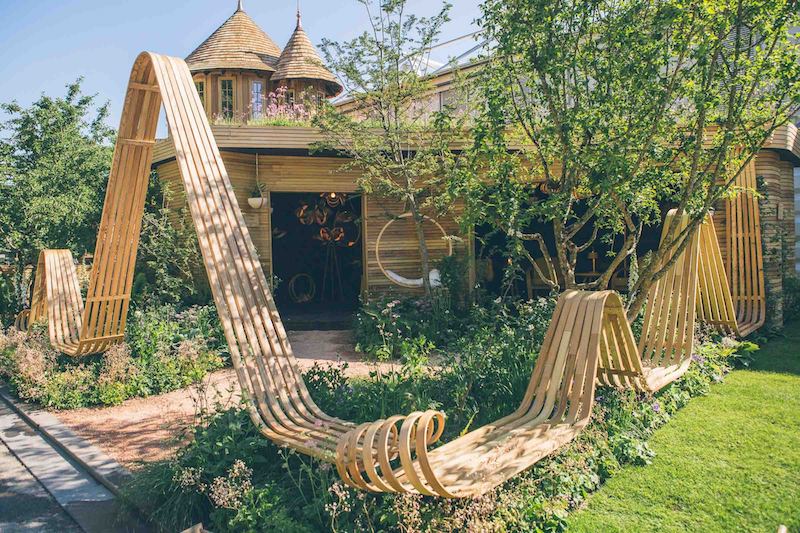
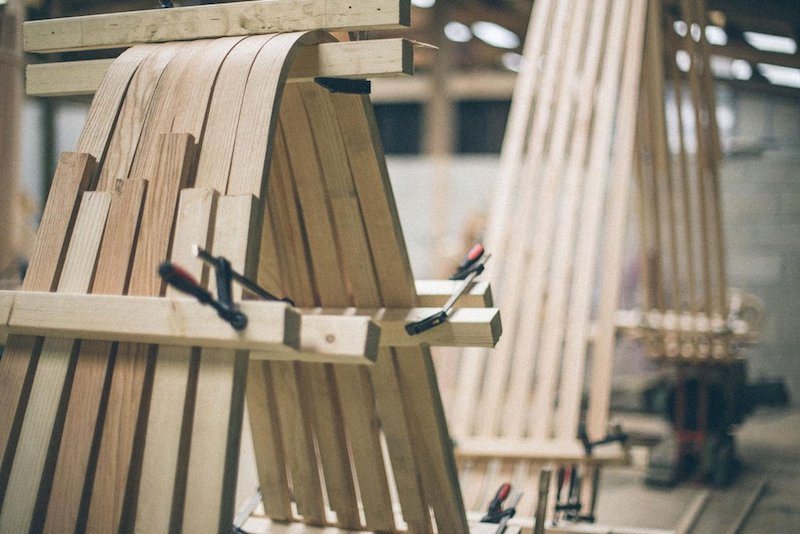
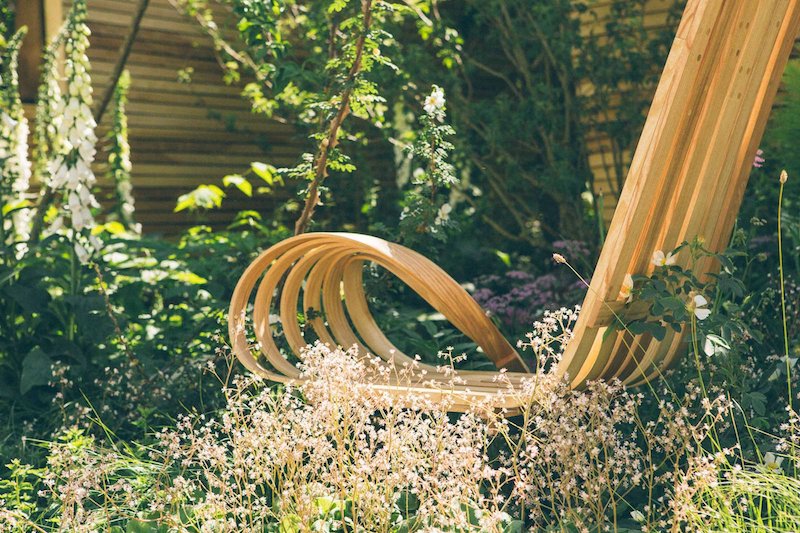
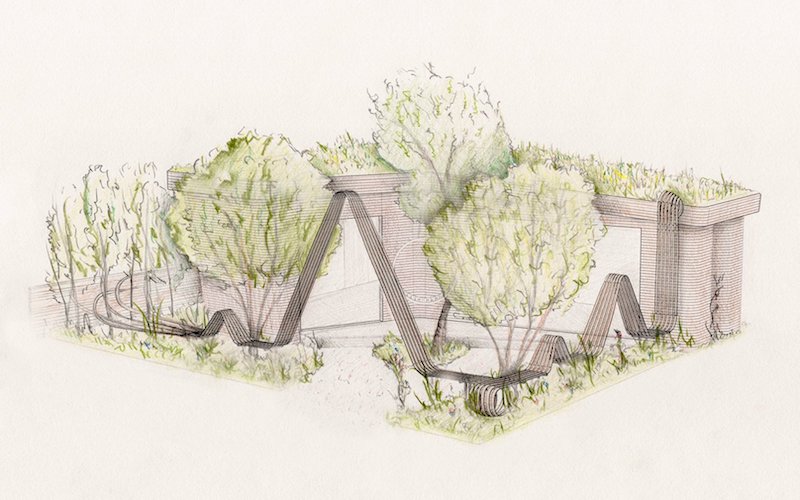
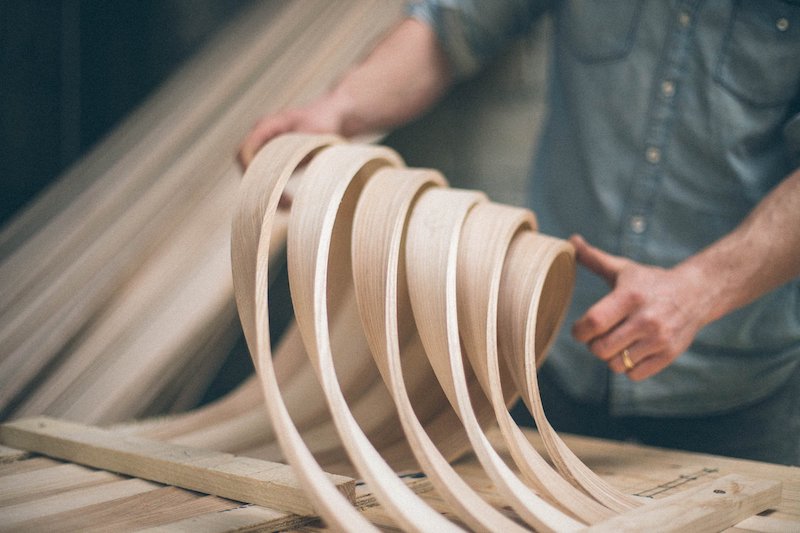
Raffield describes his pavilion as “an enthralling, sensory experience for those who wonder amongst its many unfurling steam-bent sections, inviting benches, archways, and elegant, nature-inspired harmonizing twists.”
Steam bending is an ancient art that’s been used for many centuries to craft objects like violins and boat hulls. Tom Raffield refined the process to coax naturally stiff, strong strips of ash or oak wood into the unusual shapes seen in his work. He keeps sections of wood within steam-filled bags until they become pliable, manipulates them by hand, and then clamps them into place to set. No chemicals, additives, or glues are required, making it a truly eco-friendly process.
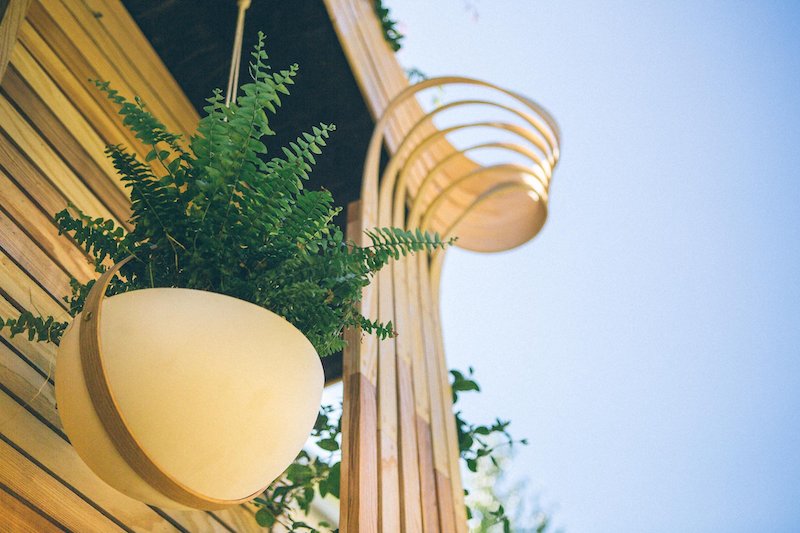
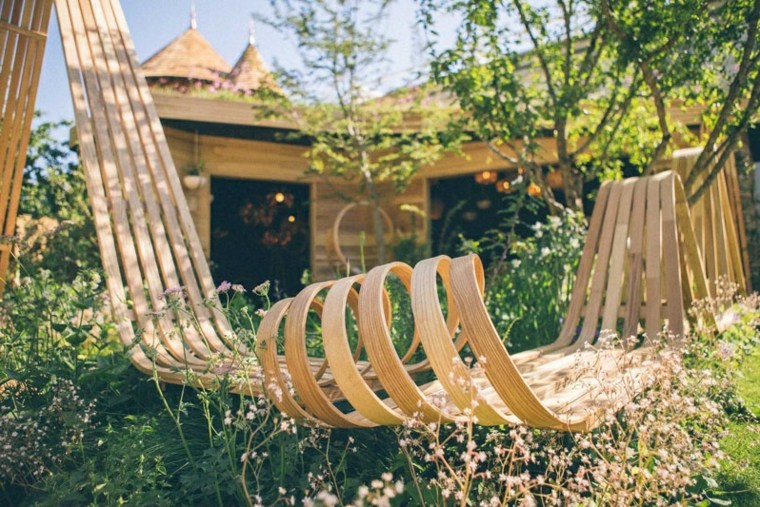
Valuing traditional craftsmanship and sustainable ethics above all else, Raffield uses sustainably sourced timber from responsibly managed forests and always aims to leave no scrap of wood behind. If a leftover piece is too small or damaged to be incorporated into one of Raffield’s signature works of art, it goes into a wood burner to warm up the brand’s showroom.
“Evocative or architectural. Utilitarian or dramatic. Every design draws on the curves, lines, and twists epitomized in the steam bending discovery which started our journey. No chemicals. No additives. No production line. Just handcrafted design, valued heritage, and an understanding that every experiment holds the key to a new way of doing things.”

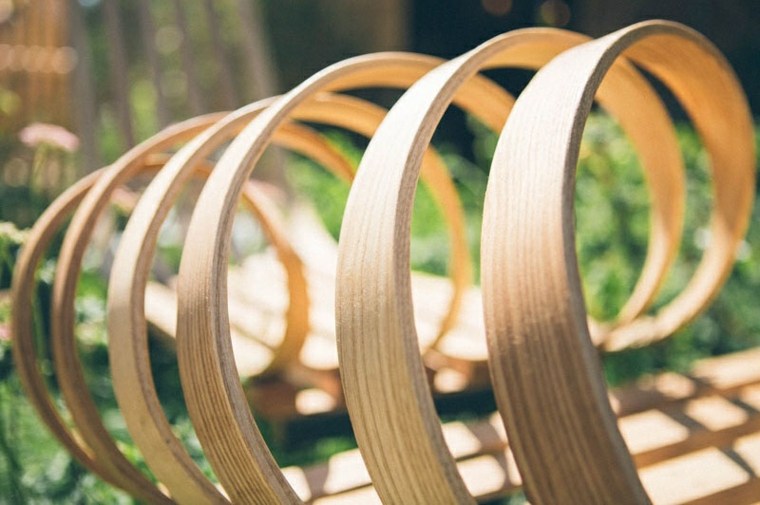
The Chelsea Flower Show pavilion isn’t Tom Raffield’s first foray into architectural steam bending. Previously, the designer incorporated his signature style into the exterior of his own home, creating a ribbon-like installation that wrapped around the facade to alternately act as cladding, railings, and decorative trim before sweeping back down to ground level to offer people a place to sit.




